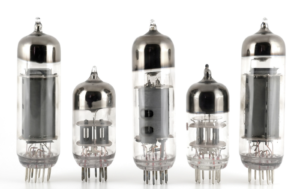Read the Following Selection
Read the following selection, or click on the play button below to listen aloud.
The Computer Revolution

Today, everyone knows computers are machines that we depend on in countless ways every day. But did you know that back in the early 1600s people were already using the word computer? Back in those days, it meant someone who did calculations or computations. Computers have changed a lot since then.
The First Computer
Computers are machines that can be programmed to carry out sequences of logical or mathematical operations. Computer-like machines were first designed as long ago as the early 1800s, but none of them were ever built then.
Most experts agree that the first computer was not actually built until 1942. It was called the Atanasoff-Berry Computer, or ABC, after its American inventors, John Vincent Atanasoff and Clifford Berry. This computer could not be programmed, as computers today can be, but it was a start.
Scientists worked to make the computer programmable—this was the computer’s software. But they also experimented to improve the actual machine, which was the computer’s hardware. By 1946, they had created ENIAC, the first programmable computer. It could spit out results 1000 times faster than other machines of the time!
Scientists in England were working on improving computer software. In 1948, they created a computer they called Baby. It was the first computer that could store program instructions in its memory.

From Big to Little
One of the main ways that early computers differ from the ones you use today is that the old machines were huge. Computers such as ENIAC were more than twice as big as a classroom.
Computers had to be so big because they were powered by large glass tubes called vacuum tubes. Not only did these tubes become very hot when they were working, but they also did not work very well. Although there might be thousands of vacuum tubes in a single computer, if even just one burned out, then the entire computer would stop working.
That all changed in the late 1950s when transistors began replacing the vacuum tubes. Transistors are tiny devices that are used to increase and change electronic signals and electrical power. They are much smaller and lighter than vacuum tubes and are also cheaper to make, more durable, and much more reliable.

Your Life with Computers
Thanks to transistors, computers became much smaller, more reliable, and more powerful. But scientists kept working to improve computers. They figured out how to put hundreds of transistors on an even smaller microchip. Suddenly computers became much smaller and much more powerful. Today, millions and even billions of transistors can be placed on a single microchip the size of your fingernail.
Without the computer, there would be no Internet, personal computers, or many other technologies. In fact, most machines you use today are powered by computers.
Now, show what you know!
Complete some questions about the reading selection by clicking “Begin Questions” below.









